NASA's Cassini probe: Highlights of 13-year journey
Highlights of 13-year journey
This colorful view from NASA's Cassini mission is the highest-resolution view of the unique six-sided jet stream at Saturn's north pole known as "the hexagon."
)
This colorful view from NASA's Cassini mission is the highest-resolution view of the unique six-sided jet stream at Saturn's north pole known as "the hexagon." This movie, made from images obtained by Cassini's imaging cameras, is the first to show the hexagon in color filters, and the first movie to show a complete view from the north pole. (Source : Nasa)
This enhanced false color view is a departure from the familiar bluish north and golden south seen in natural color Cassini spacecraft images
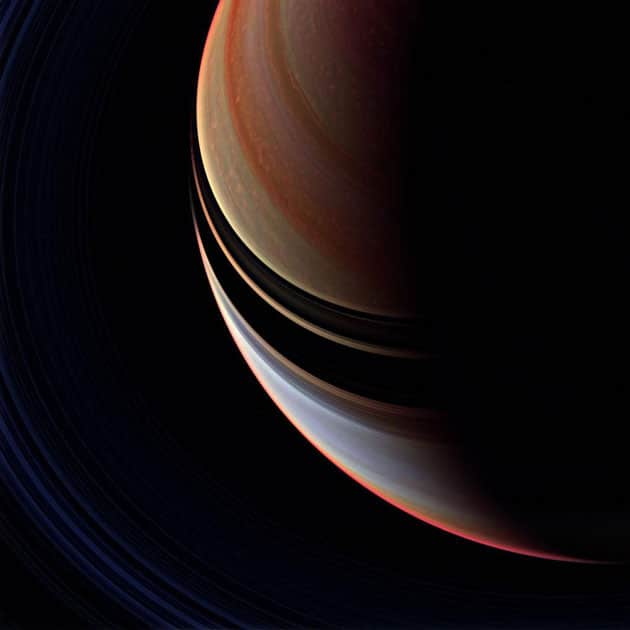
This enhanced false color view is a departure from the familiar bluish north and golden south seen in natural color Cassini spacecraft images, making the contrast between regions north and south of the ring shadows more readily apparent.
The Cassini spacecraft surveys Saturn's outstretched ring system in the infrared from a vantage point high above the planet's northern latitudes
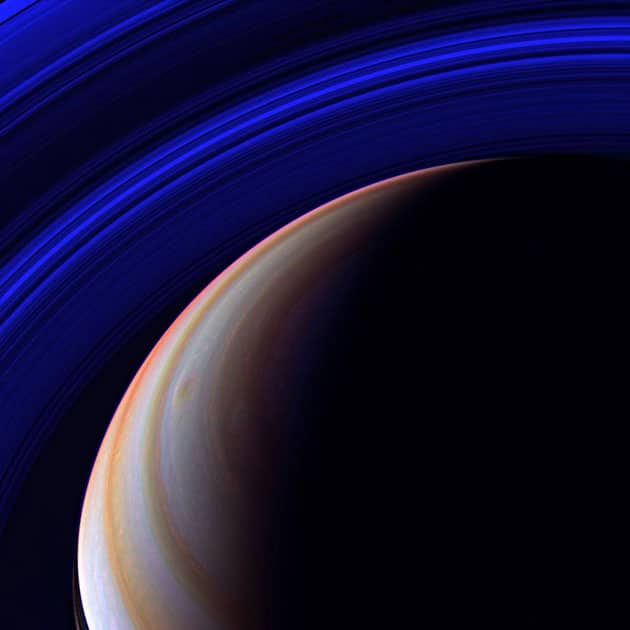
The Cassini spacecraft surveys Saturn's outstretched ring system in the infrared from a vantage point high above the planet's northern latitudes. Nearly the full expanse of the main rings is visible here - from the C ring to the outer edge of the A ring (in the upper left corner).
Saturn's rings cut across an eerie scene that is ruled by Titan's luminous crescent and globe-encircling haze, broken by the small moon Enceladus, whose icy jets are dimly visible at its south pole
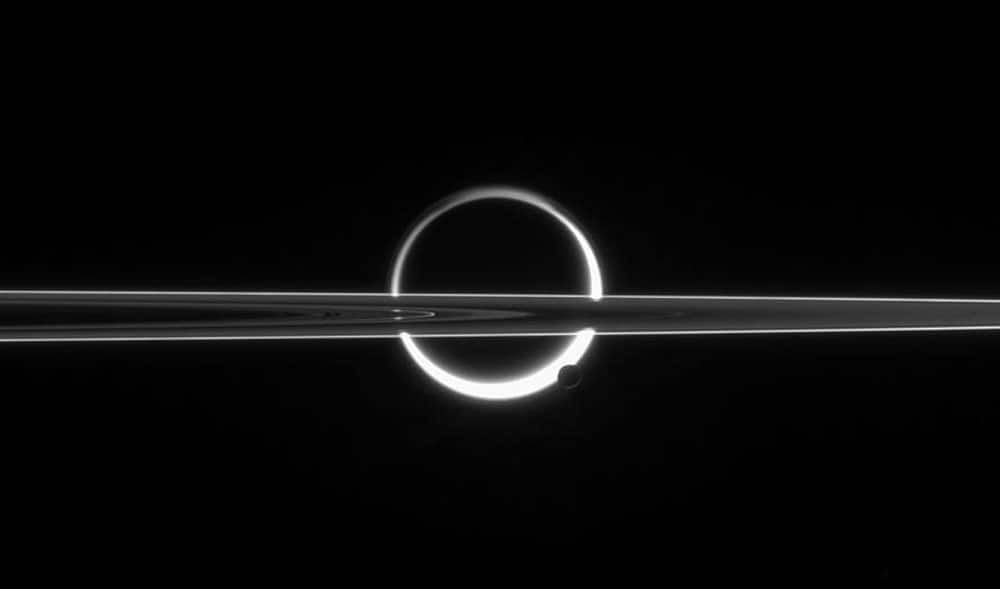
Saturn's rings cut across an eerie scene that is ruled by Titan's luminous crescent and globe-encircling haze, broken by the small moon Enceladus, whose icy jets are dimly visible at its south pole. North is up.
This false-color composite image, constructed from data obtained by NASA's Cassini spacecraft, shows Saturn's rings and southern hemisphere

This false-color composite image, constructed from data obtained by NASA's Cassini spacecraft, shows Saturn's rings and southern hemisphere. The composite image was made from 65 individual observations by Cassini's visual and infrared mapping spectrometer in the near-infrared portion of the light spectrum.
NASA's Cassini spacecraft sees bright methane clouds drifting in the summer skies of Saturn's moon Titan, along with dark hydrocarbon lakes and seas clustered around the north pole
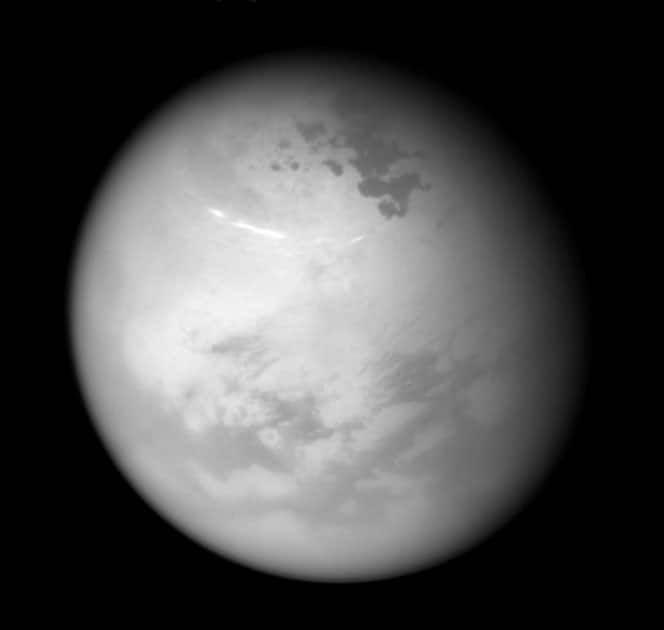
NASA's Cassini spacecraft sees bright methane clouds drifting in the summer skies of Saturn's moon Titan, along with dark hydrocarbon lakes and seas clustered around the north pole.
Saturn's icy moon Dione has undoubtedly experienced geologic activity since its formation, as evidenced by the tectonic faults and craters on its surface
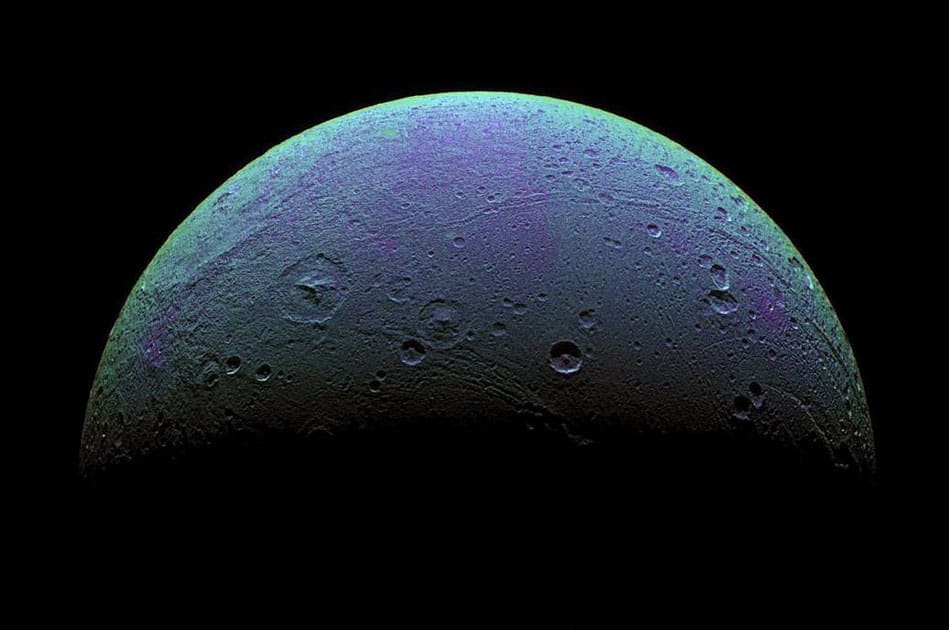
Saturn's icy moon Dione has undoubtedly experienced geologic activity since its formation, as evidenced by the tectonic faults and craters on its surface. To create this enhanced-color view, ultraviolet, green and infrared images were combined into a single black and white picture that isolates and maps regional color differences.
Dramatic plumes, both large and small, spray water ice out from many locations along the famed 'tiger stripes' near the south pole of Saturn's moon Enceladus
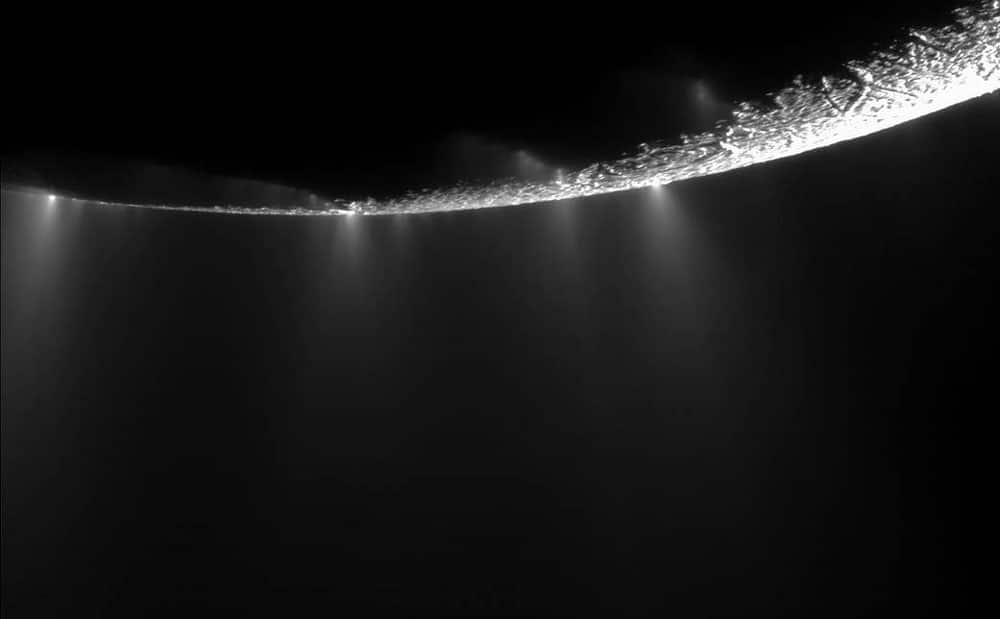
Dramatic plumes, both large and small, spray water ice out from many locations along the famed 'tiger stripes' near the south pole of Saturn's moon Enceladus. The tiger stripes are fissures that spray icy particles, water vapor and organic compounds.
NASA's Cassini spacecraft has tracked the aftermath of a rare massive storm on Saturn

NASA's Cassini spacecraft has tracked the aftermath of a rare massive storm on Saturn. Data reveal record-setting disturbances in the planet's upper atmosphere long after the visible signs of the storm abated, in addition to an indication the storm was more forceful than scientists previously thought.
The spinning vortex of Saturn's north polar storm resembles a deep red rose of giant proportions surrounded by green foliage in this false-color image
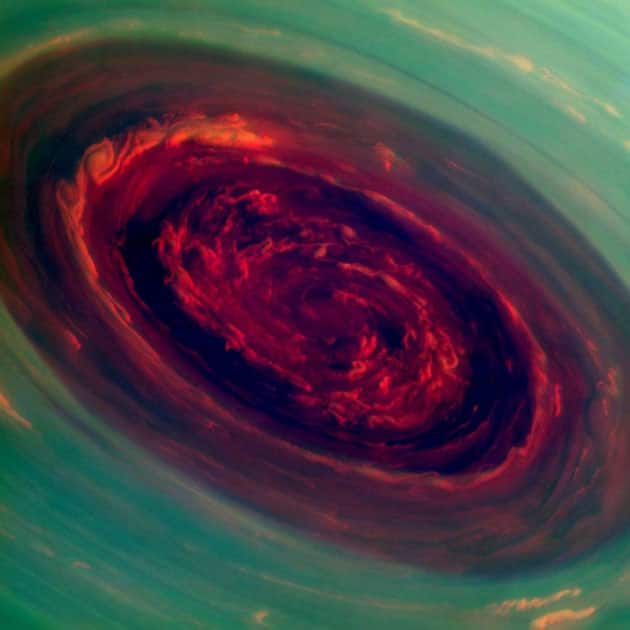
The spinning vortex of Saturn's north polar storm resembles a deep red rose of giant proportions surrounded by green foliage in this false-color image from NASA's Cassini spacecraft. Measurements have sized the eye at a staggering 1,250 miles (2,000 kilometers) across with cloud speeds as fast as 330 miles per hour (150 meters per second).
Ligeia Mare, shown here in a false-color image from NASA's Cassini mission, is the second largest known body of liquid on Saturn's moon Titan
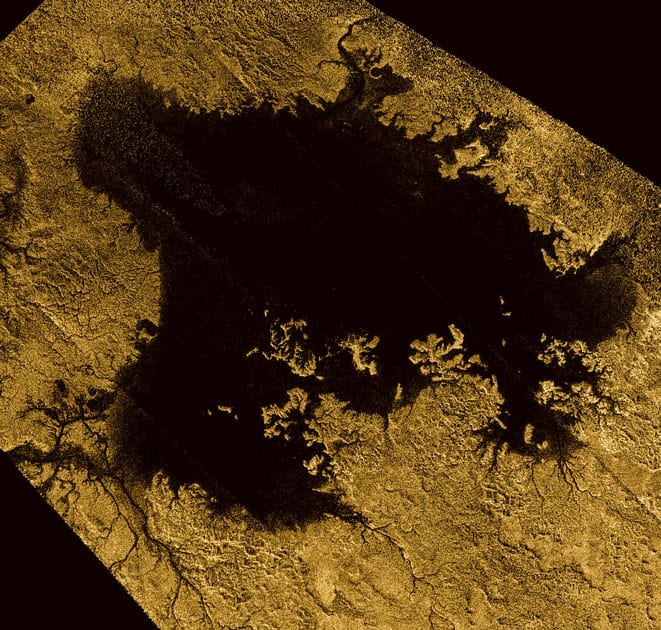
Ligeia Mare, shown here in a false-color image from NASA's Cassini mission, is the second largest known body of liquid on Saturn's moon Titan. It is filled with liquid hydrocarbons, such as ethane and methane, and is one of the many seas and lakes that bejewel Titan's north polar region.
Saturn's largest and second largest moons, Titan and Rhea, appear to be stacked on top of each other in this true-color scene from NASA's Cassini spacecraft

Saturn's largest and second largest moons, Titan and Rhea, appear to be stacked on top of each other in this true-color scene from NASA's Cassini spacecraft.The north polar hood can be seen on Titan (3,200 miles or 5,150 kilometers across) appearing as a detached layer at the top of the moon on the top right.
This near-infrared, color mosaic from NASA's Cassini spacecraft shows the sun glinting off of Titan's north polar seas

This near-infrared, color mosaic from NASA's Cassini spacecraft shows the sun glinting off of Titan's north polar seas. (Source : Nasa)
Trending Photos








